In the realm of pet care, maintaining your furry companion’s well-being extends beyond regular checkups and proper nutrition. Just as we prioritize our own eye health, it’s crucial to ensure that our canine and feline friends receive adequate eye care. Among the essential tools for maintaining healthy pet eyes, dog and cat eye wash solutions play a vital role in preventing and addressing eye irritations, infections, and debris buildup.
This comprehensive guide delves into the world of dog and cat eye wash, equipping you with the knowledge and understanding to incorporate these valuable products into your pet’s grooming routine. Whether you’re a seasoned pet owner seeking expert advice or a first-time pet parent eager to learn about eye care, this guide will provide you with the information you need to select the perfect dog and cat eye wash for your furry friend’s needs.
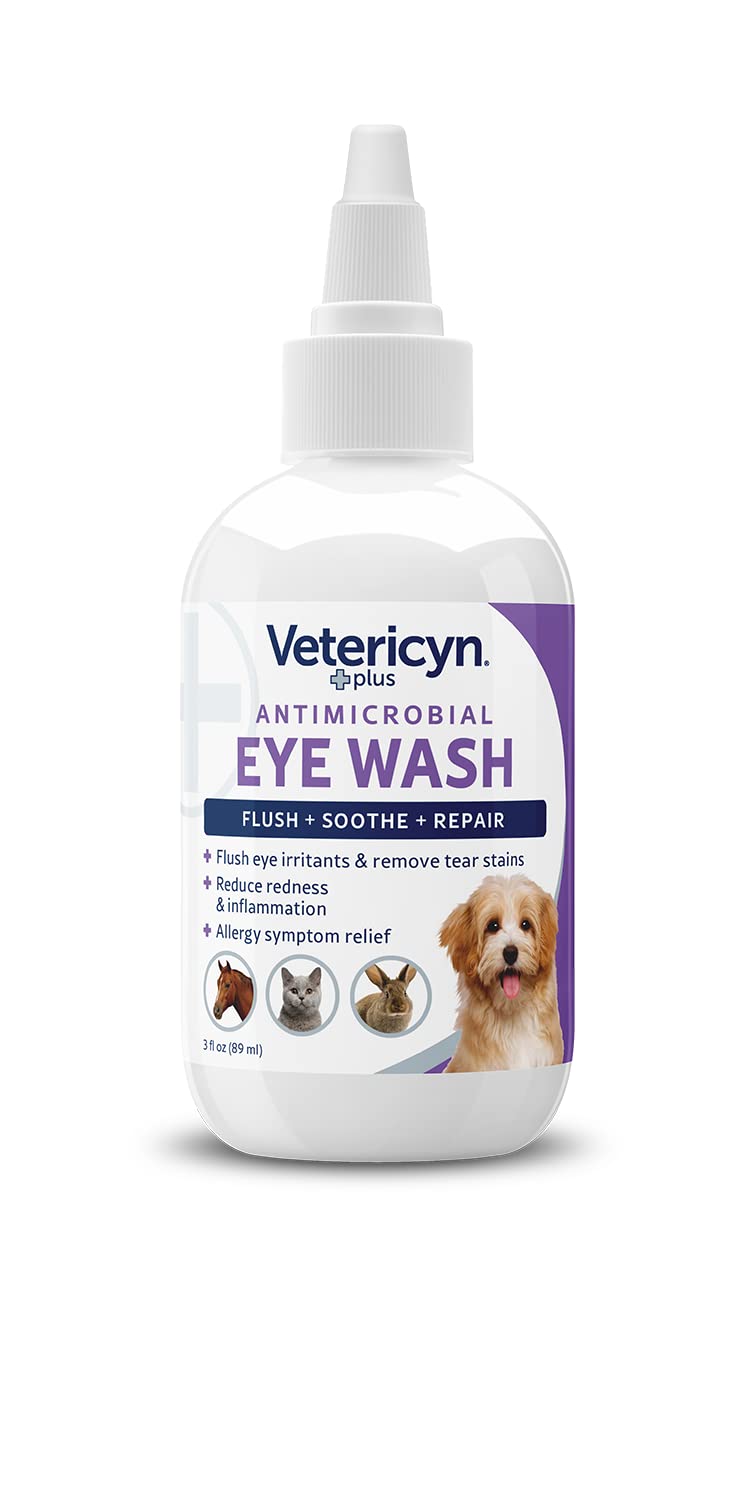
I. Introduction: Unveiling the Importance of Dog and Cat Eye Wash
-
The Significance of Eye Health in Dogs and Cats:
Dogs and cats, like humans, rely heavily on their vision for navigation, hunting, social interactions, and overall well-being. Just as we prioritize our own eye health, it’s essential to maintain the ocular health of our furry companions. Healthy eyes allow them to perceive their surroundings clearly, engage in their natural behaviors, and enjoy a high quality of life.
-
Common Eye Issues in Dogs and Cats:
Dogs and cats can experience a variety of eye problems, ranging from mild irritations to serious infections. Some common eye issues include:
-
Eye discharge: This can be caused by allergies, infections, or foreign objects in the eye. Excessive discharge can indicate an underlying issue and requires prompt attention.
-
Redness and inflammation: Redness and inflammation of the eyes, often accompanied by squinting and discomfort, can be caused by allergies, infections, or trauma.
-
Squinting and eye pain: Squinting is a common sign of eye discomfort, often caused by allergies, infections, or foreign objects in the eye. Eye pain can manifest as rubbing the eyes, pawing at the face, or avoiding bright lights.
-
Tearing: Excessive tearing can be caused by allergies, infections, or eye injuries. While some tearing is normal, especially in certain breeds, excessive tearing warrants veterinary evaluation.
-
The Role of Dog and Cat Eye Wash in Preventing and Addressing Eye Issues:
Dog and cat eye wash solutions are essential tools for maintaining healthy eyes and preventing eye problems in our furry companions. They play a crucial role in:
-
Removing debris and irritants: Eye wash can gently flush out dirt, dust, pollen, and other debris that can cause irritation, inflammation, and infection.
-
Soothing and relieving inflammation: Eye wash can help reduce redness, swelling, and discomfort associated with eye allergies, infections, or injuries.
-
Promoting healing: Eye wash can help promote healing and prevent the spread of infections by removing irritants and creating a clean environment for healing.
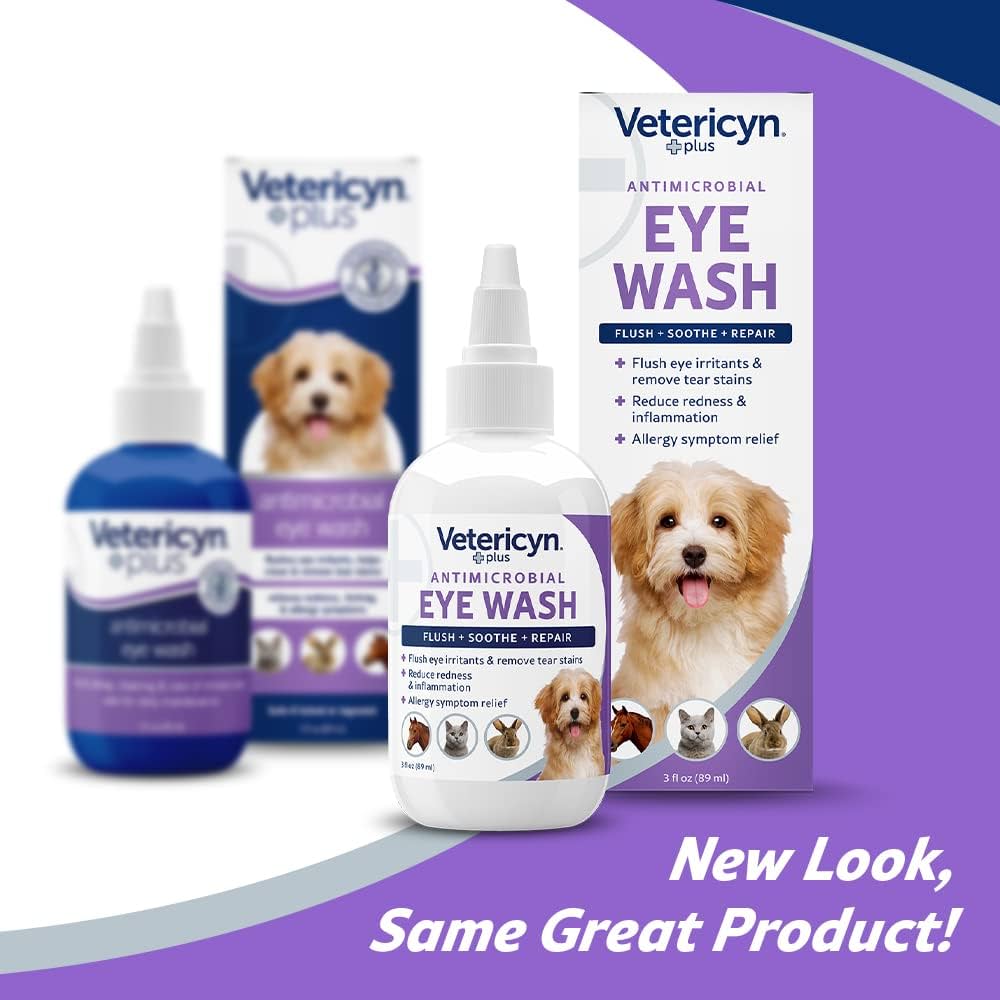
II. Essential Features of Dog and Cat Eye Wash
- Gentleness and Non-Irritating Formula:
When choosing an eye wash for your pet, prioritize a gentle and non-irritating formula specifically designed for dogs and cats. Avoid harsh chemicals or fragrances that could further aggravate their delicate eyes.
- Safe for Use Around the Eyes:
Ensure the eye wash is safe for use around the eyes, meaning it should not contain any harsh chemicals or fragrances that could irritate your pet’s eyes. Look for products labeled specifically for use around the eyes.
- Easy to Use and Apply:
Opt for an eye wash that comes in a convenient and easy-to-use format, such as pre-moistened wipes or a squeeze bottle. This will make it easier to administer the eye wash to your pet without causing unnecessary stress or discomfort.
- Veterinary Recommended or Approved:
When selecting an eye wash, consider choosing a product that is recommended or approved by veterinarians. This can provide an extra layer of assurance regarding the product’s safety and effectiveness.
- Individual Pet Needs:
Consider your pet’s specific needs when choosing an eye wash. If your pet has allergies, choose an eye wash specifically formulated to address allergy-related eye issues. If your pet has frequent eye discharge, consider a product designed to remove debris and soothe irritation.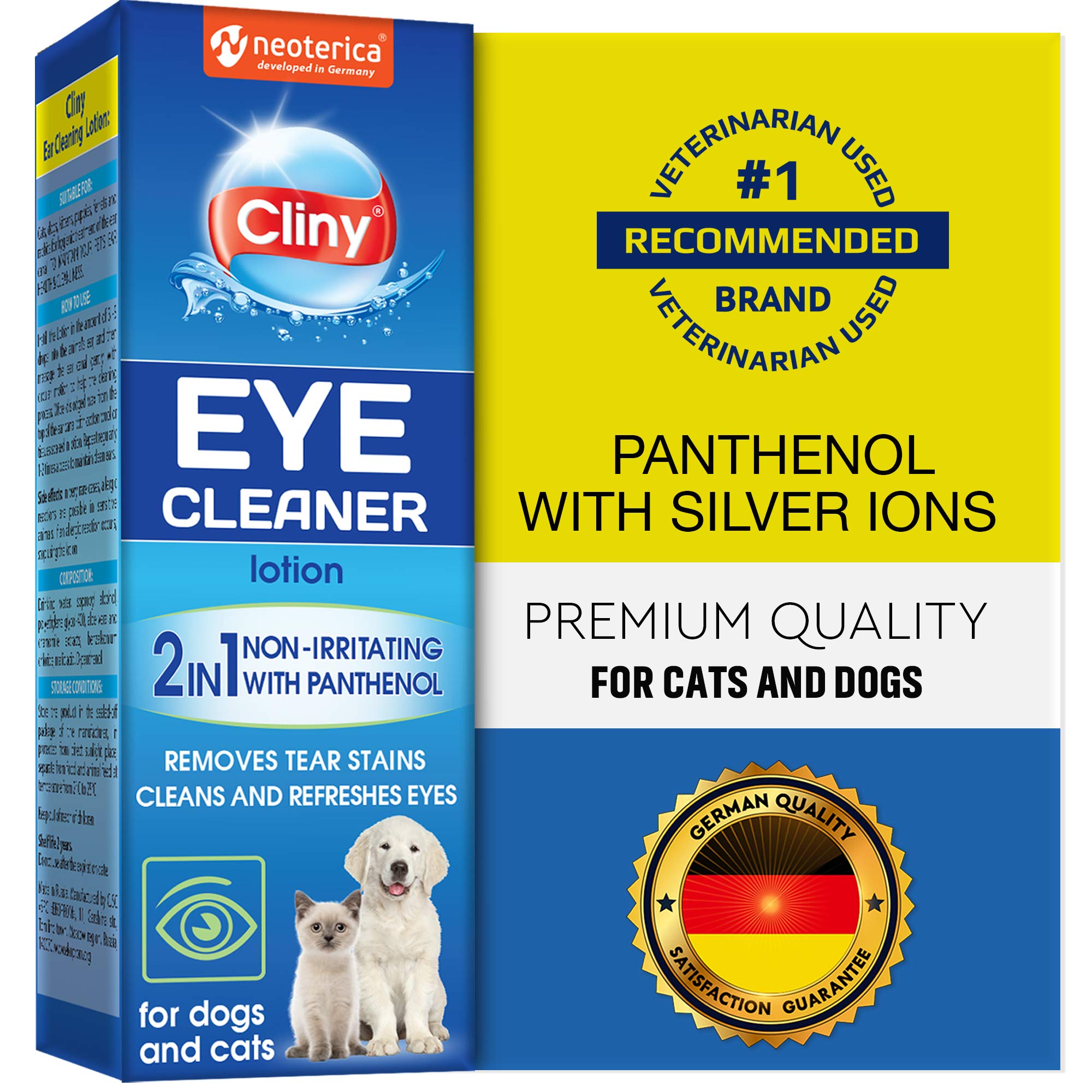
III. Benefits of Using Dog and Cat Eye Wash
- Preventative Eye Care:
Regular use of eye wash can help prevent eye problems by removing debris and irritants before they can cause inflammation or infection. It’s a proactive approach to maintaining your pet’s ocular health.
- Relief from Eye Discomfort:
Eye wash can provide immediate relief from eye discomfort caused by allergies, infections, or foreign objects. It can soothe irritation,
reduce redness, and alleviate pain, promoting a sense of comfort for your pet.
- Promote Eye Health:
By preventing and addressing eye problems, eye wash can help promote overall eye health and well-being in your pet. Healthy eyes contribute to a higher quality of life, allowing them to see clearly and engage in their favorite activities.
- Maintain Clear Vision:
Healthy eyes are essential for maintaining clear vision. Eye wash helps remove debris and irritants that can obstruct your pet’s vision, allowing them to see their surroundings clearly and navigate their environment with confidence.
- Strengthen the Bond with Your Pet:
Regular eye care using eye wash can be a bonding experience. The gentle act of cleaning your pet’s eyes fosters trust and strengthens the connection between you and your furry friend. It demonstrates your care and attentiveness to their well-being.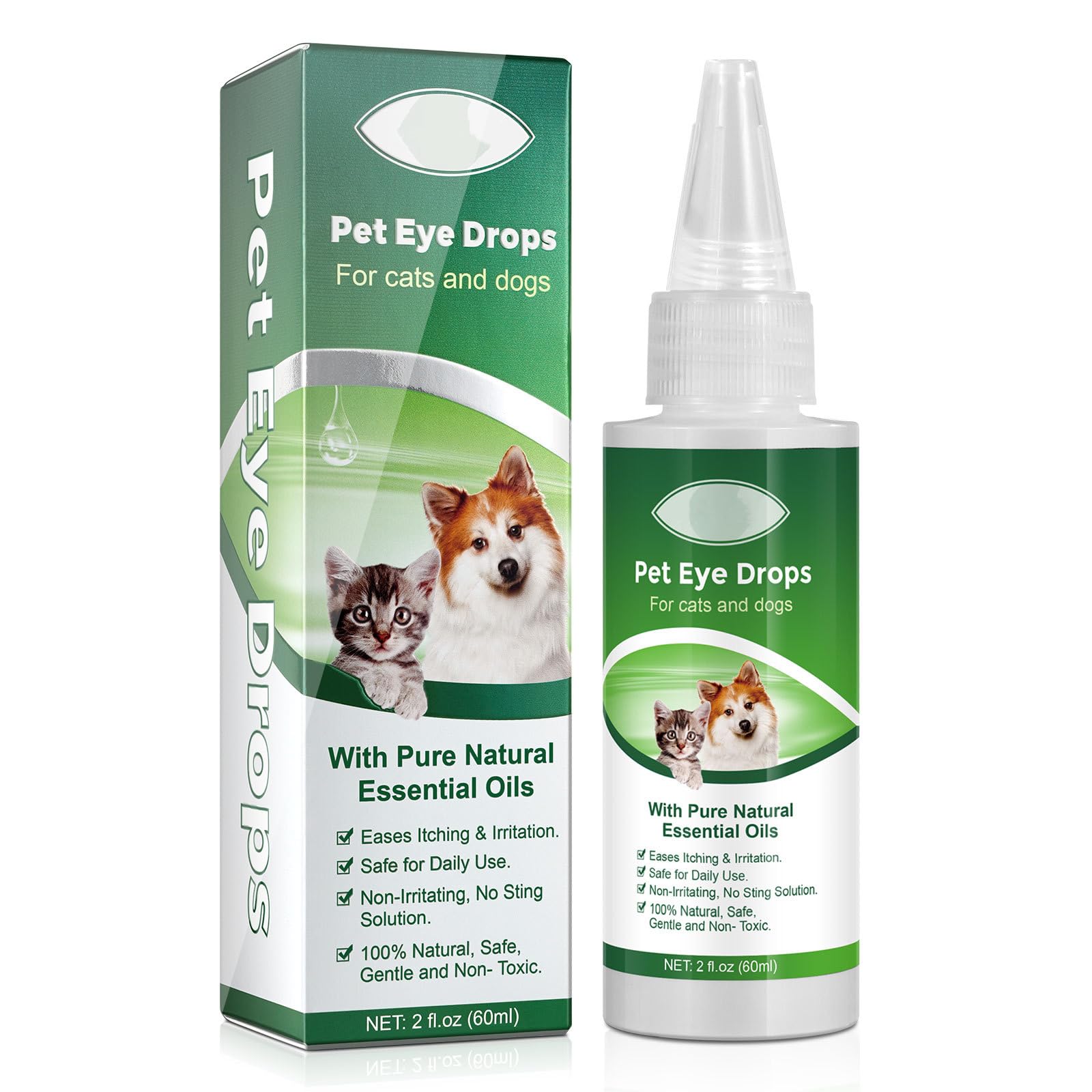
IV. Types of Dog and Cat Eye Wash
- Pre-Moistened Wipes:
Pre-moistened wipes offer a convenient and mess-free way to clean your pet’s eyes. They are ideal for quick cleanups or for pets who may be easily stressed by other methods. Look for wipes specifically formulated for dogs and cats, as human wipes may contain ingredients that can irritate their eyes.
- Squeeze Bottle Eye Wash:
Squeeze bottle eye wash provides more control during application. It’s a good option for pets who need a more thorough cleaning or for removing stubborn debris. Choose a bottle with a gentle dispensing tip to avoid accidentally spraying the eye directly.
- Saline Solution:
Veterinarians often recommend sterile saline solution as a safe and effective eye wash for dogs and cats. It is gentle on the eyes and can be used to flush out irritants and debris. However, unlike some commercial eye washes, saline solution may not contain ingredients to soothe inflammation or promote healing.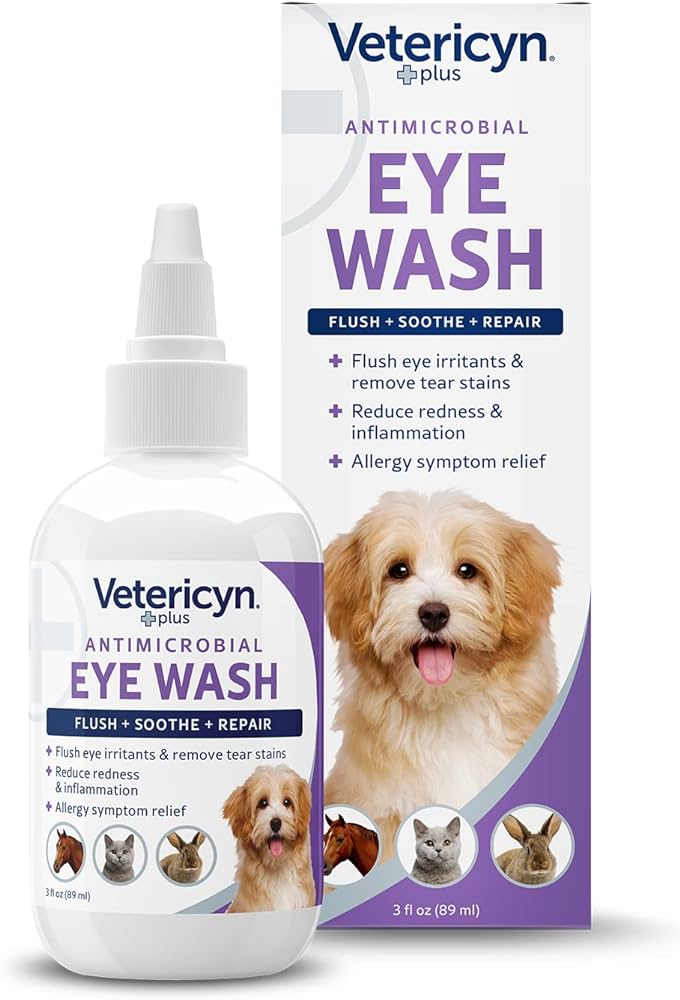
V. How to Use Dog and Cat Eye Wash Safely
- Gather Supplies:
Before using eye wash on your pet, gather the necessary supplies, including eye wash solution, cotton balls or gauze pads (optional), and treats. Having everything readily available will help make the process smoother and less stressful for your pet.
- Restrain Your Pet Gently:
Secure your pet gently but firmly to prevent them from moving their head during the cleaning process. You can have someone assist you with holding your pet if needed.
- Clean Around the Eye:
Using a clean cotton ball or gauze pad moistened with eye wash or warm water (not hot), gently wipe away any discharge or debris from around the eye. Use a separate cotton ball or gauze pad for each eye to avoid spreading infection.
- Apply Eye Wash:
If using pre-moistened wipes, gently wipe across the eye from the inner corner to the outer corner. If using a squeeze bottle, hold the tip at a safe distance and gently squirt the eye wash onto the eye, allowing it to run down the face. Avoid spraying directly into the eye.
- Blot Away Excess Moisture:
Use a clean cotton ball or gauze pad to blot away any excess moisture from the face. Be gentle and avoid rubbing the eye.
- Repeat and Reward:
Repeat the cleaning process on the other eye, using fresh cotton balls or gauze pads. Once finished, offer your pet praise and a treat to reward them for their cooperation.
VI. When to See a Veterinarian
While dog and cat eye wash can be a valuable tool for routine eye care and addressing minor irritations, it’s important to seek veterinary attention if you notice any of the following signs:
-
Severe redness or inflammation: Excessive redness or inflammation of the eye, especially if accompanied by squinting or discomfort, could indicate a more serious underlying condition.
-
Excessive discharge: Thick, pus-like discharge, or a change in the color or consistency of discharge, can be a sign of infection and requires veterinary evaluation.
-
Squinting or pawing at the eye: Persistent squinting, pawing at the eye, or rubbing the face against objects can indicate pain or discomfort and warrants a trip to the vet.
-
Sudden vision loss: Any sudden change in your pet’s vision, such as bumping into objects or seeming disoriented, requires immediate veterinary attention.
VII. Conclusion: Prioritizing Your Pet’s Eye Health
Maintaining your pet’s eye health is an essential part of responsible pet ownership. By incorporating dog and cat eye wash into your pet’s grooming routine and being aware of the signs that warrant veterinary attention, you can help ensure your furry friend enjoys clear vision and optimal well-being throughout their life. Remember, a proactive approach to eye care can save your pet from discomfort and prevent more serious eye problems down the road.